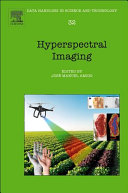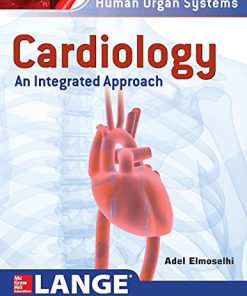(Ebook PDF) Hyperspectral Imaging Volume 32 Data Handling in Science and Technology, Volume 32 1st Edition by Jose Manuel Amigo 0444639772 978-0444639776 full chapters
$50.00 Original price was: $50.00.$25.00Current price is: $25.00.
Hyperspectral Imaging Volume 32 Data Handling in Science and Technology, Volume 32 1st Edition by Jose Manuel Amigo – Ebook PDF Instant Download/DeliveryISBN: 0444639772, 978-0444639776
Full download Hyperspectral Imaging Volume 32 Data Handling in Science and Technology, Volume 32 1st Edition after payment

Product details:
ISBN-10 : 0444639772
ISBN-13 : 978-0444639776
Author: Jose Manuel Amigo
Hyperspectral Imaging, Volume 32, presents a comprehensive exploration of the different analytical methodologies applied on hyperspectral imaging and a state-of-the-art analysis of applications in different scientific and industrial areas. This book presents, for the first time, a comprehensive collection of the main multivariate algorithms used for hyperspectral image analysis in different fields of application. The benefits, drawbacks and suitability of each are fully discussed, along with examples of their application. Users will find state-of-the art information on the machinery for hyperspectral image acquisition, along with a critical assessment of the usage of hyperspectral imaging in diverse scientific fields.
Hyperspectral Imaging Volume 32 Data Handling in Science and Technology, Volume 32 1st Table of contents:
Chapter 1.1. Hyperspectral and multispectral imaging: setting the scene
1. Images: basic concepts, spatial resolution, and spectral information
2. Data mining: chemometrics
3. Growing the number of application fields of HSI and MSI
Chapter 1.2. Configuration of hyperspectral and multispectral imaging systems
1. Introduction
2. Light–matter interaction
3. Acquisition modes
4. Light source
5. Wavelength dispersion devices
6. Detectors
7. Calibration
8. Conclusions
Algorithms and methods
Chapter 2.1. Preprocessing of hyperspectral and multispectral images
1. Why preprocessing?
2. Geometric corrections of distortions coming from the instrument
3. Dead pixels, spikes, and missing scan lines
4. Spectral preprocessing
5. Background removal
6. Some advices on preprocessing
Chapter 2.2. Hyperspectral compression
1. Introduction
2. Lossless approaches
3. Lossy approaches
4. Conclusions
Chapter 2.3. Pansharpening
1. Introduction
2. Classification of pansharpening methods
3. Quality assessment of pansharpening products
4. Sharpening of hyperspectral data
5. Concluding remarks
Chapter 2.4. Unsupervised exploration of hyperspectral and multispectral images
1. Unsupervised exploration methods
2. Projection methods: Principal component analysis
3. Clustering
4. Final observations
Chapter 2.5. Multivariate curve resolution for hyperspectral image analysis
1. Hyperspectral images: Structures and related models
2. Multivariate curve resolution: The direct link with the measurement model
3. Multivariate curve resolution-alternating least squares
4. Image fusion (or multiset analysis)
5. Use of resolved maps and spectral signatures: going beyond MCR
6. Conclusions
Chapter 2.6. Nonlinear spectral unmixing
1. Introduction
2. Multilayered model
3. Intimate mixtures model
4. Examples
5. Conclusions
Chapter 2.7. Variability of the endmembers in spectral unmixing
1. Introduction
2. Reminder on linear spectral unmixing
3. Endmember variability in remote sensing
4. Handling variability in the spatial domain
5. Summary and future research avenues
Chapter 2.8. An overview of regression methods in hyperspectral and multispectral imaging
1. Introduction
2. Brief theory of most popular regression methods
3. Considerations to apply regression methods in HSI and MSI
4. Applications
5. Conclusions
Chapter 2.9. Classical least squares for detection and classification
1. Introduction
2. Classical least squares models
3. Characterization of the measured signal
4. Example applications
5. Conclusions
Chapter 2.10. Supervised classification methods in hyperspectral imaging—recent advances
1. Hyperspectral imaging and the importance of contextual information
2. Ensemble strategies for image classification
3. Methods for the inclusion of contextual analysis
4. Conclusion
Chapter 2.11. Fusion of hyperspectral imaging and LiDAR for forest monitoring
1. Introduction
2. Motivation
3. Schemes of fusion
4. Applications
5. Datasets
Chapter 2.12. Hyperspectral time series analysis: hyperspectral image data streams interpreted by modeling known and unknown variations
1. Introduction
2. Methods
3. Results
4. Overall model assessments
5. Conclusions
Chapter 2.13. Statistical biophysical parameter retrieval and emulation with Gaussian processes
1. Introduction
2. Gaussian process models for inverse modeling
3. Advanced Gaussian processes for inverse modeling
4. Emulation and optimization of radiative transfer models with Gaussian processes
5. Conclusions
Application fields
Chapter 3.1. Applications in remote sensing—natural landscapes
1. Introduction
2. Planetary sciences
3. Coastal areas
4. Cryosphere
5. Vegetation
6. Discussion and conclusion
Chapter 3.2. Applications in remote sensing—anthropogenic activities
1. Introduction
2. Urban areas
3. Soils
4. Atmosphere
5. Precision agriculture
6. Conclusion
Chapter 3.3. Hyperspectral imaging in crop fields: precision agriculture
1. Crop fields, precision agriculture, and chemometrics. A general overview
2. Detection of contaminants
3. Water stress and health status
4. Crop diseases
5. Pre-harvest applications
6. Conclusions and further challenges
Chapter 3.4. Food and feed production
1. Introduction
2. Prediction of quality properties
3. Classification by variety or species or origin
4. Determination of industrial properties
5. Detection of physical defects or damage
6. Detection of biological damage and contamination
7. Detection of adulterations and frauds
8. Detection of allergens
9. Conclusions
Chapter 3.5. Hyperspectral imaging for food-related microbiology applications
1. Introduction
2. Hyperspectral imaging
3. Chapter organization
4. Visible-near-infrared applications
5. Near-InfraRed
6. Raman
7. Conclusions
Chapter 3.6. Hyperspectral imaging in medical applications
1. Introduction
2. Tissue optics
3. Hardware and systems
4. Image analysis
5. Medical applications
6. Discussions
7. Conclusion
Chapter 3.7. Hyperspectral imaging as a part of pharmaceutical product design
1. Background
2. RGB imaging
3. NIR and IR imaging
4. Raman imaging
5. UV imaging
6. Challenges and future needs in the pharmaceutical field
Chapter 3.8. Hyperspectral imaging for artworks investigation
1. Imaging spectroscopy for cultural heritage applications: a brief historical overview
2. Hyperspectral imaging for investigations of artworks: basics
3. Instrumentations, setups, and specific issues
4. Approaches to data processing and data handling
5. An example of application: noninvasive examination of a renaissance panel painting
6. Summary
Chapter 3.9. Growing applications of hyperspectral and multispectral imaging
People also search for Hyperspectral Imaging Volume 32 Data Handling in Science and Technology, Volume 32 1st:
medical hyperspectral imaging a review
hyperspectral imaging system
hyperspectral imaging agriculture
hyperspectral imaging satellite
hyperspectral imaging applications
Tags:
Hyperspectral,Imaging Volume,Data Handling,Science,Technology,Jose Manuel Amigo
You may also like…
Medicine - Cardiology
Uncategorized
Uncategorized
The works of the Rev John Wesley Volume 06 (of 32) 1st edition by John Wesley B0CVFNNX28
Romance - Contemporary Romance
Erotica - Fiction
Erotica - Fiction
Medicine - Neurology
Neuroscience for Neurosurgeons 1st Edition by Farhana Akter 1108918468 9781108918466












